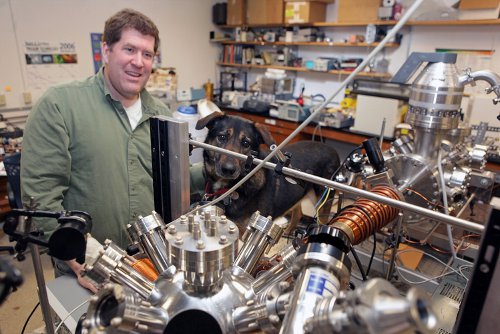I have a small collection of recent research papers that I’d like to write up open in various browser tabs and suchlike, but many of these would benefit from having some relatively clear and compact explanations of the underlying techniques. And while I can either dig up some old posts, or Google somebody else’s, it’s been a while since I wrote some simple, straightforward explanations of physics techniques, so I thought it’d be fun to write up some new explanations for use in future posts. Thus, this introduction to a series of techniques commonly used in my corner of Atomic, Molecular, and Optical (AMO) physics, for the making and manipulation of samples of atoms at extremely cold temperatures– below a millikelvin (one one-thousandth of a degree above absolute zero.
Of course, the list of things it occurs to me to define might not perfectly match the list of things other people would like to see defined, which is the other reason for doing an introductory post. I have a set of tools in mind to define, but there might be some things I’m forgetting. So I’ll post the projected list here, and if you see something missing from it, please leave a comment telling me, and I’ll add it to the list. So far, this is what I’ve got:
- Light scattering forces and slow atomic beams
- Optical molasses
- Light shifts and optical dipole traps
- Optical lattices
- Optical pumping and Siusyphus cooling
- Magneto-optical traps
- Magnetic traps
- Evaporative cooling
- Atom detection and imaging
- …?
If I feel ambitious, I’ll come back and edit this post to put in links; if not, I’ll just do a wrap-up post at the end with a bunch of links. We’ll see.
Anyway, that’s the plan. If you see stuff missing (or, rather, don’t see something on that list that you’ve heard mentioned in the context of cold-atom physics), please let me know. The goal here is to have a somewhat useful technical glossary that I can refer back to in future write-ups (or if I ever get crazy ambitious and decide to paste together a bunch of research-blog posts to make an ebook or something…).

Feshbach resonances maybe? (although that may be a little hard-core). Still, they are a very useful too for tweaking interaction strengths.
To be honest, I don’t think I’ve ever quite understood what a phonon is.
I know with a BEC you can get to the nonlinear schrodinger equation, but I’m a little unsure how you get there from here. Anything you deal with?
In the unlikely event that anyone is obsessively following this list, I added Sisyphus cooling to the list today; I had originally intended to do it in the lattices post, but it deserves its own post.